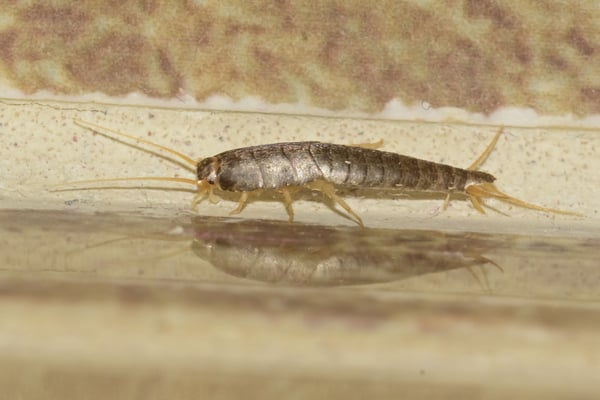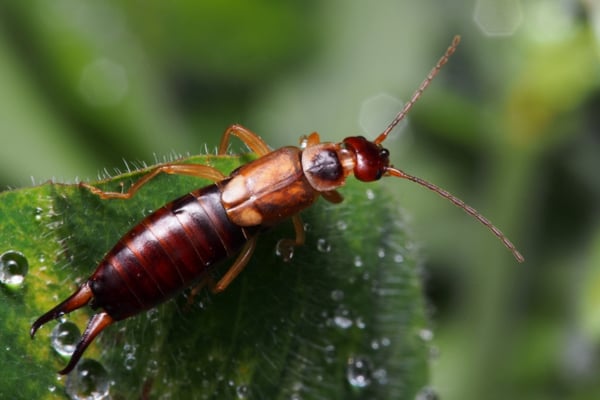Everything in the world needs to stay hydrated in order to survive in one way or another. No matter how small, slimy, or gross, everything needs some kind of moisture. Unfortunately, that includes pest bugs. In fact, for many pest bugs, finding moisture is as powerful a motivator as finding food. If you have chronic pest problems and can’t understand why, there’s a good chance excess moisture is your issue. Moisture and humidity issues are easy to overlook, and they’ll bring in pests just as reliably as food sources. Here are four pests that are attracted to the moisture in your home, and what to do about them.
Cockroaches
The German cockroach (Blattela germanica) is by far the most common roach species infesting homes in North America. German cockroaches are ½ to ⅝ inches long, with light brown or tan bodies, six legs, and long antennae. Roaches are attracted to warm and humid places. You’ll often find them near the water heater in your basement or in your kitchen. They have surprisingly flat bodies which allow them to sneak under tight spaces easily. Roaches require warmth and constant hydration in order to remain active. The more they have of each, the longer they can remain active. Roaches require very little to stay hydrated, and they can make what little they need last a long time. Condensation or dripping pipes provide more than enough water for them. Starting in your basement, look for signs of excess moisture buildup. Control the humidity, patch up leaks, and dry out puddles. The less you give roaches to use, the better.
Silverfish
Silverfish, or Lepisma saccharina, are small, wingless insects with a distinct silver coloration. They have six legs, long antennae, and three long, tail-like bristles sticking out of their posteriors prominently. They’re known for their quick, darting movements that look similar to swimming, hence the “fish” moniker. Silverfish also possess scale-like segmented body parts. Silverfish prefer hot, wet places. They attempt to stay in hidden areas as long as possible. You may find them beneath boxes or furniture. Silverfish need to keep their bodies moist or they’ll dry out and die. To do that, they have to live in warm, humid environments. Naturally, that means they’re attracted to humid areas of your home. If you have silverfish, you’ll probably encounter them in your basement, bathrooms, or kitchen. Like roaches, silverfish have very flat bodies. Look for low, small gaps and cracks, especially around window and door frames. Try to find and fix humidity-producing drafts, too.Centipedes
House centipedes (Scutigera coleoptrata) are 1 to 1½ inch arthropods with up to 15 pairs of long, long legs. House centipedes’ bodies are a tan or dirty yellow, and their legs have bands of light and dark coloration. Like silverfish, centipedes are very quick and often move erratically. Like many of the pests on this list, house centipedes are nocturnal. They spend most of the day hiding in secluded, humid locations and come out to forage at night. Unlike many pests, house centipedes lack a moisture-preserving cuticle. Without that cuticle, they can’t effectively preserve their body moisture for long periods of time. They need to rehydrate constantly, or their bodies will dry out and they’ll die. Consequently, house centipedes are very attracted to moist, humid parts of your home. They congregate around condensation, plumbing leaks, puddles, or runoff. They also tend to live near drafty areas where they can catch their prey.






